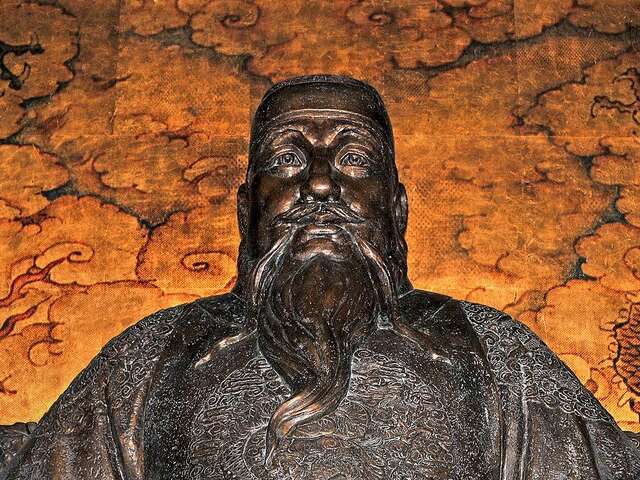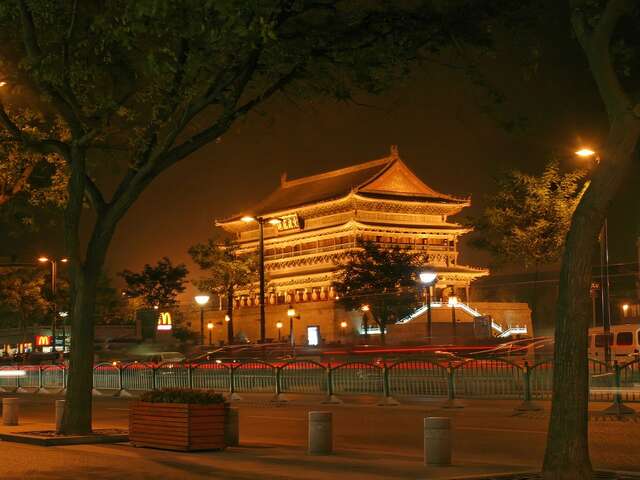In the 15th century, the Chinese regarded their country as the centre of the world. In the heart of their seat of power stood the emperor’s palace: the Forbidden City. The walls concealed a world of extreme wealth where mere mortals were banned for 600 years. Now the city attracts up to 20,000 visitors a day, but there is one place where nobody has ever entered which will soon be accessible to the general public.

In 1402, General proclaimed himself emperor and ordered the construction of a city for the ‘Sons of Heavens’, as the emperors from the various dynasties were known. Millions of labourers worked for 14 years to build China’s ultimate seat of power. In 1421, the emperor took up residency in the palace complex and made Beijing the new capital of China. Twenty-four emperors would rule from the Forbidden City. In 1912, the last emperor was placed under house arrest in the palace. In 1924, the monarchy was abolished and replaced by the People’s Republic of China
For a long time, it remained a mystery how the Chinese managed to build this enormous city. The complex is filled with heavy slabs of marble topped with intricate sculptures. The largest is 16.8 metres long and three metres wide. Scientists recently concluded that these incredibly heavy pieces of marble were probably transported over icy roads. By flooding the roads in the long, cold winters with a thin layer of water, the builders were able to transport these huge slabs of marble using the labour of only fifty people.
Yellow is power, red is good fortune.
Colour played an important role in the Forbidden City. Yellow symbolised the highest power and was exclusively reserved for the emperor. Practically everything he touched and wore was yellow: from his clothing and bedding to the floor tiles and dishes. Even the roof tiles in the Forbidden City are glazed in yellow to clearly announce his divinity.
Red is associated with fertility and good fortune so all of the buildings and defensive walls are red. But this colour also symbolises fire and that is the reason why the library roof is the only roof in the city that is black, instead of yellow. Black symbolises water and would extinguish the flames in case of a fire.
The Feng Shui philosophy
One of the key factors for determining the location of the Forbidden City was Feng Shui, a traditional Chinese philosophy which works with finding locations that are in harmony with nature. Another important element of Feng Shui is symmetry, and therefore the design of the Forbidden City is mostly symmetrical. The north-south axis in the centre is lined with the most important buildings. The other buildings are placed symmetrically on both sides of the centre.
Number 9 for masculinity
The Forbidden City is filled with references to the magical number nine, which is of great importance in Chinese numerology. The number nine represents the ultimate masculinity and thus the emperor. To gain access to the emperor, one had to pass through nine gates. The Forbidden City also has 9,999 rooms, only one room less than the mythical 10,000 rooms of the palace in heaven. On the roof of the Imperial Palace, you will see nine mythical creatures that were supposed to protect the emperor. The nails on the gates have been applied in rows of nine, containing nine nails each.
The final secret
Although the Forbidden City is now open to the general public, one spot has always remained a mystery. When the last emperor fled the Forbidden City in 1924, the doors of one of its largest treasures, the Qianlong Garden, were sealed. But within a few years, this secret garden will be inaugurated to the public. The garden was built by the fourth emperor of the Qing dynasty as part of his private quarters. He issued a decree that after his death the garden should remain untouched for eternity. The bamboo furniture, the silk paintings, the jade ornaments and the 18th century glassware: everything has been preserved in a pristine state. The restoration began in 2008 and the garden is expected to reopen by 2020.











No comments:
Post a Comment